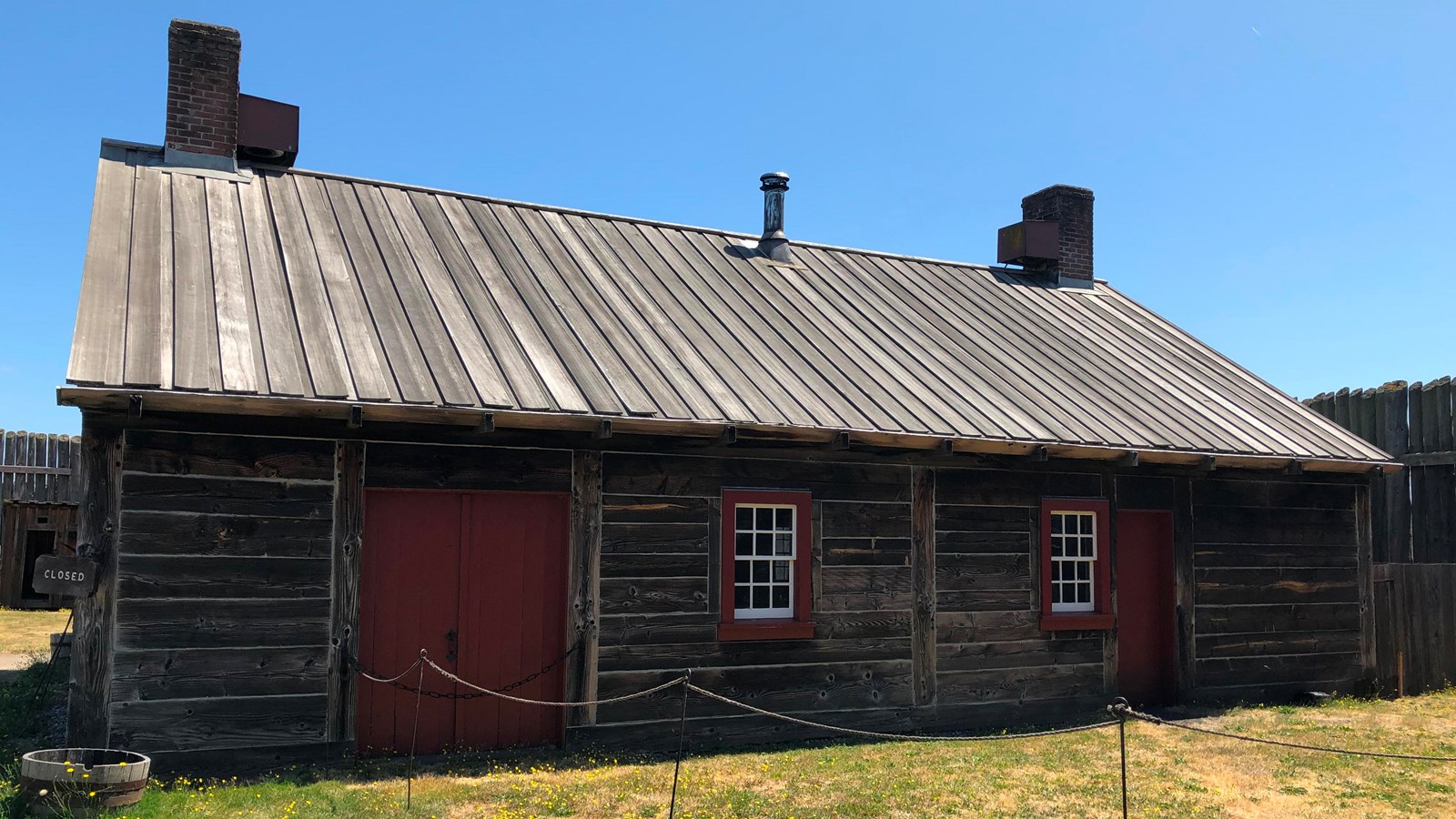Last updated: September 8, 2020
Place
The Blacksmith Shop

NPS Photo
Quick Facts
Amenities
1 listed
Historical/Interpretive Information/Exhibits
Blacksmiths at Fort Vancouver provided the tools and hardware used in everyday life. They made everything from axes and beaver traps to gardening hoes and fishing spears. The Blacksmith Shop at Fort Vancouver produced things mostly for Hudson's Bay Company operations but also made goods that were sold or traded to Indigenous peoples and American settlers throughout the Oregon Country. So great was the demand for these items that at one point, the fort employed five blacksmiths in two shops, with another shop just upriver at the sawmill.
But when the HBC first arrived to the region in the winter of 1824-1825, the closest blacksmith shop was at Fort George, located on the Oregon Coast near present-day Astoria, Oregon. Builders needed iron nails and tools to construct the buildings of Fort Vancouver, which was then located on a bluff overlooking the Columbia River and the prairie where the fort would be relocated in 1829. The fort's first blacksmith, William Cannon, set up a primitive smithy - nothing more than a forge and an anvil under a tree. His set-up was located up the hill to the north of that first fort. When the fort was moved closer to the river four years later, the shop was relocated inside the palisade walls. The reconstruction you see today is based on the Blacksmith Shop's location and appearance in 1845-46.
The smithing process took place every working day at Fort Vancouver. It required technical skill and years of expertise. First, the blacksmith built a fire in his forge, using coal or charcoal. He pumped a bellows attached to the forge to force in oxygen and stoke the flames to upwards of 2000 degrees Fahrenheit. Into the raging fire the blacksmith placed bars of wrought iron or steel shipped from Britain. Here the iron turned red-hot. The blacksmith could then bend and beat the bars into shape using a hammer and anvil. Most of the hardware used at Fort Vancouver was made this way by hand in the often sweltering, dirty Blacksmith Shop.
But when the HBC first arrived to the region in the winter of 1824-1825, the closest blacksmith shop was at Fort George, located on the Oregon Coast near present-day Astoria, Oregon. Builders needed iron nails and tools to construct the buildings of Fort Vancouver, which was then located on a bluff overlooking the Columbia River and the prairie where the fort would be relocated in 1829. The fort's first blacksmith, William Cannon, set up a primitive smithy - nothing more than a forge and an anvil under a tree. His set-up was located up the hill to the north of that first fort. When the fort was moved closer to the river four years later, the shop was relocated inside the palisade walls. The reconstruction you see today is based on the Blacksmith Shop's location and appearance in 1845-46.
The smithing process took place every working day at Fort Vancouver. It required technical skill and years of expertise. First, the blacksmith built a fire in his forge, using coal or charcoal. He pumped a bellows attached to the forge to force in oxygen and stoke the flames to upwards of 2000 degrees Fahrenheit. Into the raging fire the blacksmith placed bars of wrought iron or steel shipped from Britain. Here the iron turned red-hot. The blacksmith could then bend and beat the bars into shape using a hammer and anvil. Most of the hardware used at Fort Vancouver was made this way by hand in the often sweltering, dirty Blacksmith Shop.
